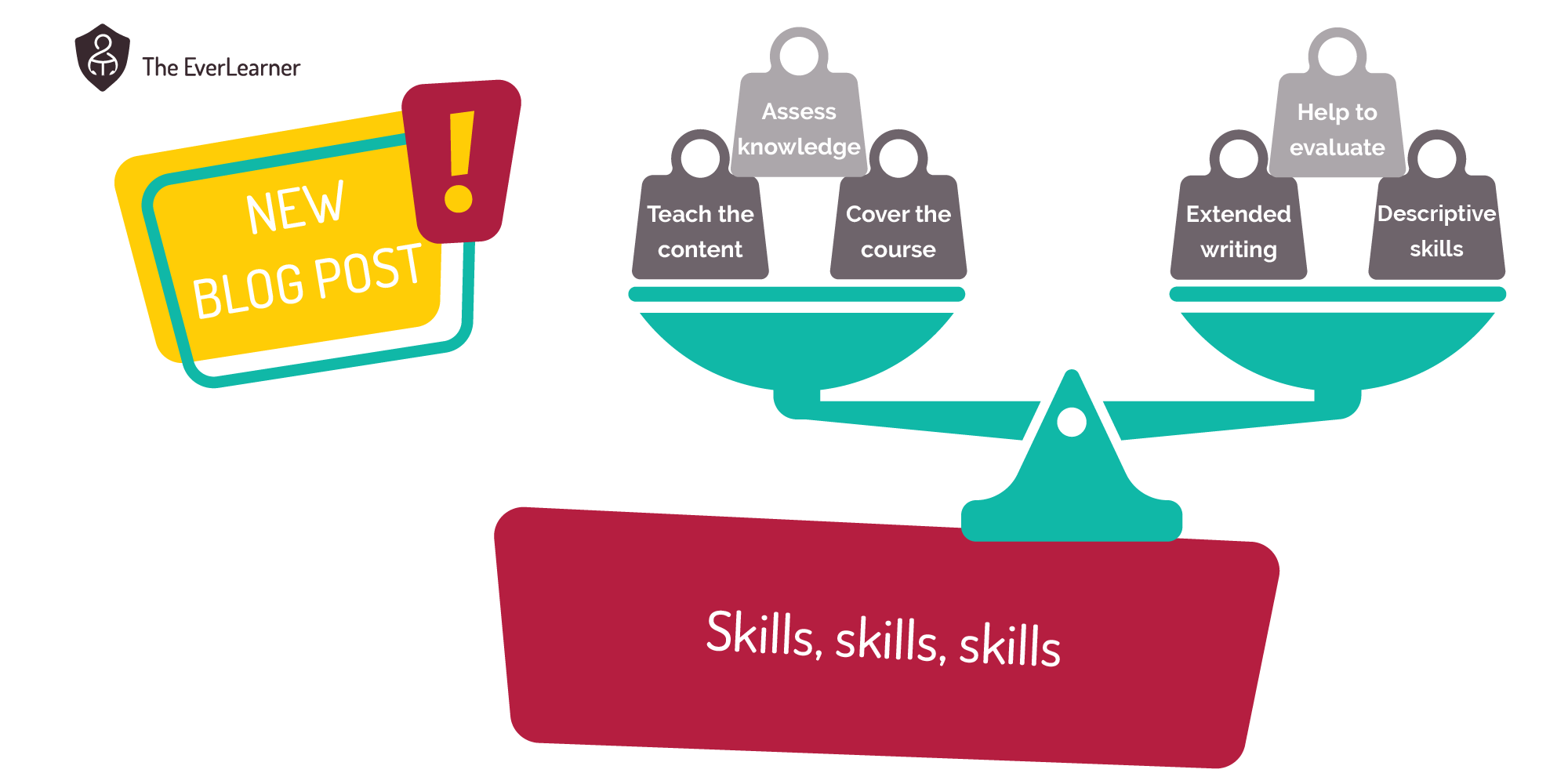Five good and five bad things an educational leader might say
Those of you who follow my work regularly will have heard or read me say or write frequently:
“Where are the leaders?”
It is my contention that the education sector is severely lacking in leadership and, thus, this is one of the reasons why teachers and the education sector in general experience some of the avoidable challenges they do.
In this post, I want to provide 10 statements, five of which, in my opinion, we should expect to hear or read from a leader and five which –although very commonly spoken or written in education– we should never expect or accept a leader to say.
As always, these are my thoughts only and I am sharing them publicly in an attempt to generate a conversation. I tend to write in the sphere of school-based physical education teaching, learning and leadership and many of you reading this post will be PE teachers of some form. Whilst none of the points above specifically relate to PE teaching specifically, all of them can be applied to PE or by PE teachers.
Five good things a leader might say:
- “Tell me where we are going wrong.”
- “What are the barriers to this being world-class? I am going to remove them.”
- “Having consulted as widely as possible, this is our direction. I need your support.”
- “It’s OK to have a bad day. We go again tomorrow.”
- “Convince me this is the right way to go.”
Five bad things a leader might say:
- “Zero tolerance.”
- “We need to aim for consistency.”
- “We don’t have the time.”
- “This is how it’s always been.”
- “What research is there to prove that?”
Five good things a leader might say
“Tell me where we are going wrong.”
Critical feedback loops are, well, critical!! In my experience, all good leaders seek out critical feedback. In fact, they insist on it. They obsess about it. Leadership is not a rose garden of tranquillity. If it is, it isn’t leadership. Leadership should feel like chewing on glass (not literally) because the leader spends most of their time thinking and problem-solving on what is not working.
Furthermore, leaders need to build teams that encompass diverse skill sets. For example, consider the last bunch of SLTs that you have worked with or within. Which skill sets dominated those groups? Could you look at those groups and clearly identify diversity? I am not writing here about gender or colour or sexuality hues. Rather, I am writing about merit, wherever it is found. Look at your SLT now and ask yourself whether that group will likely provide the de facto leader with critical feedback. Look at that group and ask questions such as:
“Which members (plural matters here) of this leadership group fundamentally understand how human beings learn, remember and forget?”
With the exception of emergency events such as fire drills, a leader will always seek out the other side. They will always assume they are making a poor call until all information is available. They will always question their own decision-making intrinsically.
This is not a call for democracy in schools where everyone has their input on every decision. That wouldn’t work. Rather, what follows is a few paragraphs about the dynamics of leadership and the fact that leaders –true leaders– will always seek out alternative voices and evidence.
“What are the barriers to this being world class? I am going to remove them.”
I have stolen this one from a brilliant colleague I worked for and with between 2004 and 2010, Dr. John Guy. John was my principal at Farnborough Sixth Form College and was a brilliant leader. I remember that when I was appointed as senior curriculum manager, John asked me this question. I was a little dumbfounded at the time and I seem to remember stumbling over my words. But he asked me to think about it and that is pretty much all I did for five years. This question from John cut through all of my self-limiting beliefs. It made me stare, frankly, into what it takes to make something world class and to acknowledge that this was my ultimate aim as a teacher, worker, parent, listener or whatever I happened to be. John changed me as a person with that one single question and I thank him for it.
“Having consulted as widely as possible, this is our direction. I need your support.”
This statement is important. Not everything can be a democratic process and leaders need to make decisions and ask for support. Autocracy is part of leadership… at the right time. I want you to ponder two points of view:
- Leadership is about making the right call.
- Leadership is about making calls and then garnering support and activation for those decisions to a degree to which it makes the call the right one.
Which do you believe is more realistic? Can any human being make the “right call” over and over? Or is it more likely that people make decisions and then make them work in the best way possible? I would argue the latter and this leads into my philosophy of leadership, which is that actually there are no right and wrong decisions. Rather, decisions need to be given the right type of support and framework to cause them to be right.
“It’s OK to have a bad day. We go again tomorrow.”
People, including leaders, screw up all the time. All the time! I have often said that a six-out-of-10 day is a pretty damn good day. I wish I had more of them, to be honest. Therefore, dwelling on errors is not a good policy. Errors are not a sign of weakness. Rather, in a healthy system and a team, they are indicators of inevitable future success. The pathway to success is strewn with errors and deviations and rethinks. Errors are helpful when managed in the right culture. We need to see this as normal and embrace it as leaders.
“Convince me this is the right way to go.”
This is one of the statements I have uttered most in my career. I use it extensively with students and with colleagues. This statement gives ownership and opportunity to the other person and asks them to think deeply about what they are proposing.
I’ll put the statement into a classroom setting:
By asking this follow-up, I am urging the student to reflect on the answer and on the details of the answer and to uncover the why and how of their response. It allows me –as the teacher in this case– to truly get to grips with whether this student truly understands what they are claiming.
Five bad things a leader might say
“Zero tolerance.”
I cannot stand zero-tolerance approaches. Literally, the worst leaders I have worked with used zero-tolerance approaches all the time.
I am going to make a statement here:
Zero-tolerance approaches are used because the leader has no solution. They have nothing else, so they use rules. Rules are the standard experience in so many environments, including in schools. Why? Seriously, why?
If we look at an alternative environment such as the streets and roads of the UK, why do rules and laws pervade? The answer, I guess, is to ensure safety and prevent crashes and pedestrian incidents. This makes perfect sense, right? It will always be the case, right? No! It only makes sense and is right today because vehicles such as cars, vans and motorbikes are capable of striking one another. What if they weren’t? What if it was impossible for two vehicles to strike one another or to strike a pedestrian? What would the rules be then?
Look out for zero-tolerance leaders: they are skipping the possibility of a solution and need to be challenged.
“We need to aim for consistency.”
This one is a biggy. I hear it all the time. Consistency should almost never be the aim in educational settings. If you (a teacher, I assume) were working in a factory making paint tins or sausages, this point would be very different. Consistency would absolutely be the aim. But we are not working in an industrial process. We are educating minds and bodies. Therefore, consistency cannot be the aim. Rather, world-class needs to be the aim and this needs to be based on the specific context in which a teacher and students are operating.
For example, why do different subject departments need to follow the same marking policy? Why do different schools within an academy trust need to offer the same qualifications even though the dynamics of their students and/or their teachers are different?
Why?
Once again, “consistency” is targeted because of a lack of solutions, not as the right solution. Look out for leaders who claim consistency is the aim. Offer these leaders critical feedback loops. It will help them.
“We don’t have the time.”
This is a more nuanced point because teaching and educational management are very busy roles. However, time is never –and I really mean never– the barrier to the “right project” unless some combination of poor systems and poor prioritisation are at play.
If there is a lack of time for the “right project”, this is not an issue with the project. This is an issue with the wider working context and for the priorities and systems that leaders produce. This is the issue. If a project is the right project, it MUST be done!
“This is how it’s always been.”
This is the sunk-cost fallacy. Leaders will often do what has always been done. In many cases, this is right but in many others, it really isn’t. Remember: tradition is nothing but an old idea. Some traditions are great. Others aren’t! Because something has a presence, it doesn’t mean it’s right, and leaders need to recognise this. Leaders ask “Why did we do it like that?” all the time.
As an extension of this point, notice leaders who will only apply scrutiny to newer ideas. Let’s say that you take a project or proposal to your line manager and they scrutinise it. This is correct, right? I agree. But what if that same manager does not apply the same level of scrutiny to whatever is already in place? This is a problem and I encourage you to spot this tendency in yourself and your leaders.
“What research is there to prove that?”
I left this one till last because it drives me bonkers. I almost don’t want to write about it. Research and evidence are wonderful things but, when they are used as a barrier to newer ideas and divergent thinking, it is unacceptable.
Numerous colleagues in the educational sector claim to be leaders whilst rejecting any concepts that have not been previously “proven”. On the face of it, this seems sensible. We should use the scientific method towards all teaching and learning, right? Wrong!! Many, many things in a classroom cannot be measured. Moreover, when you look more closely at some of the studies that our self-projected leaders rely upon, they are deeply lacking in scientific rigour.
This is a massive problem for younger educators coming into the teaching profession and I want to speak to them directly: if you believe in something –assuming that something is physically and emotionally safe– do it! Do it even if you don’t have permission. Do it even if you think you will get in trouble for it. Again, I stress: you must not take risks with fundamentals like safeguarding but, in terms of classroom practice and learning, take every risk that you can.
Forgiveness is far easier to achieve than permission. If you believe it in your head and heart, you must, must do it. This is what life is about. The biggest risk in life is to take no risks. With no risks, regret is guaranteed.
Thanks for reading and have a lovely day.
James
%20Text%20(Violet).png)


